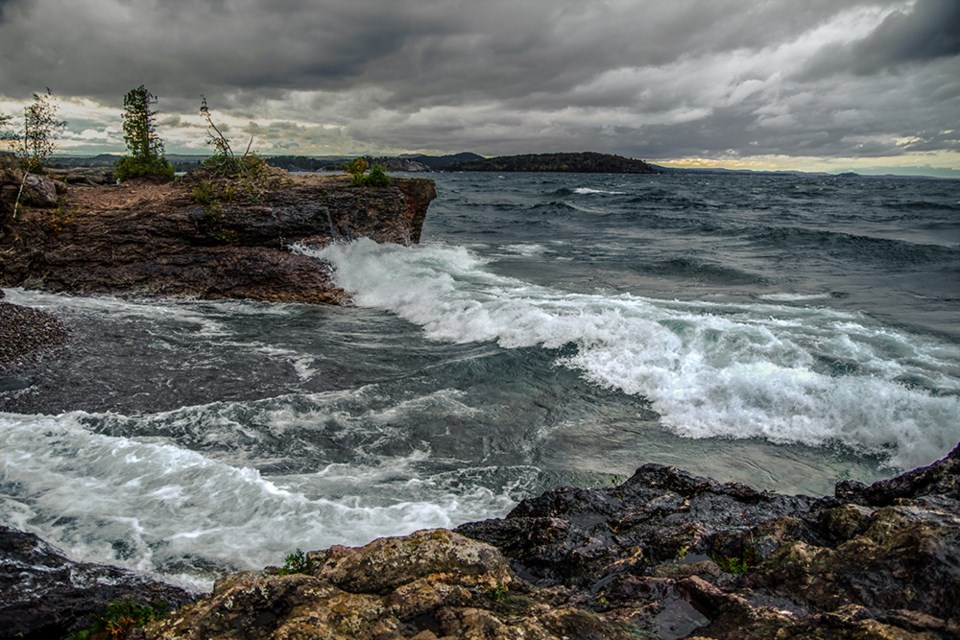MAREQUETTE, Mich. - Lake Superior has a reputation of being a lake that can blow up in a matter of seconds, with winds and seas rivaling that of any ocean. And while its long and storied history has often relied on eyewitness accounts of towering waves, buoys out in the cold water may have finally confirmed just how terrifying it can get.
Hurricane force winds on the southern shore of Lake Superior kicked up some significant swells on Tuesday, Oct. 24 and a buoy located near Munising, Mich. recorded an average wave height of 28.8 feet or 8.7 metres over an hour long period.
“It records what is called significant wave height, which is the average of the biggest third of all waves out there,” said Norma Froelich, an assistant professor in the department of earth, environment, and geographical studies at Northern Michigan University.
“That means when we do get a 28.8 foot recording, there probably were, over an hour long period, maybe a couple 30 footers or maybe even 40 footers, but then also a bunch of 10, 15, 20 foot waves in between. So it’s the average.”
The buoy is owned and operated by Northern Michigan University and is used by weather services to predict conditions on land as well as monitor conditions on the lake.
The buoys have been on the lake for the last three years, and Froelich said that while the lake has probably experienced bigger waves throughout history, this is the first time these particular buoys have ever recorded something so large.
“It is not the biggest waves that Lake Superior has seen, or even the southern end of Lake Superior has seen, but it is the biggest we’ve had since those buoys have been out there,” she said.
“The first year they were out there, we got nowhere close,” Froelich continued. “Last year we got close to 25 feet in early November. We’ve been up in the upper teens a bunch of times. Usually the waves do pick up in October and November.”
According to Froelich, the southern shore of Lake Superior often experiences intense swells because northern winds from Canada are able to travel across the lake unimpeded.
“It allows the waves to build and build as they are going,” she said. “By the time they hit the shore, we get these really intense waves.”
The rough waters of Lake Superior have been known to mariners for decades. The Edmund Fitzgerald, one of the lake's most famous wrecks, disappeared on Nov. 10, 1975 and one theory posits the freighter was capsized by a wave higher than 30 feet.
“Having the buoy out there confirms just how big it can get, it puts a number on it rather than roughly estimating based on what you see versus measuring exactly what it is,” Froelich said.
